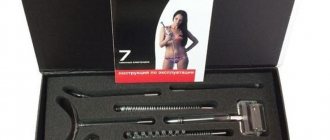On the calendar, the last month of autumn is November, and this means that the entire running community is preparing to be divided into three unequal parts: some will move their vigorous activity to warm, indoor athletics arenas or fitness centers, others will move to the side cross-country skiing, a small part will completely abandon cross-country training until spring, and another part will continue to run in the winter as if nothing had happened, not wanting to change their usual training style to anything else. The main factor in the “separation” and migration of part of the running audience to warm rooms is the weather, which is not comfortable for a large number of runners: cold, wind, precipitation. But these obstacles can be successfully dealt with, and our article will help you in this matter.
Both during the off-season and in winter, one of the basic rules that must be adhered to when purchasing running equipment is the “layering” principle. Moreover, if in the fall and spring you can sweat and, having frozen, wait for some time until it warms up, then in winter the consequences of being in a wet state on the street will be much more unpleasant: from banal serious freezing to frostbite and colds. That is why the selection of base layers for active activities in winter must be approached with special responsibility.
The “first” layer is responsible for removing moisture from the body and keeping your skin dry. Even if cold air penetrates under your clothes, if the moisture is removed from the body, you will never freeze.
The “second” layer retains heat, absorbs and retains the moisture that was removed from the body by the first layer.
“Third layer” - protects from wind, cold, precipitation.
Depending on the weather, the temperature “overboard”, the strength of the wind and the presence of falling or freshly fallen snow, you need to select the thickness of the “layers” and their number: if the weather is closer to 0C, then a minimum of three thin layers will be enough: thermal underwear, thin fleece, windproof jacket, hat, gloves, but if the thermometer drops below -10C, then you should definitely think about increasing the number of layers and maximizing the presence of insulation and structural parts that retain heat near the body.
Special requirements for “winter” clothing and running shoes
A light weight
Many layers - a lot of weight. But no. If you don’t want to look like a beefy penguin at the zoo, then choose clothes for training in winter from the “running” collections - they take into account the fact that you should be warm and that you will need to actively move.
Thermal insulation
Winter “running” collections must have insulation; it is used in an amount sufficient to protect the owner from freezing. At the same time, the insulation layer and the design of the clothing are such that you do not overheat even during intense workouts. To compensate for overheating, it is recommended to use clothing with built-in additional ventilation with zippers that can be opened when you are too hot.
Wind protection
There will be an icy wind and you will definitely need protection from it. That is why collections of clothes and shoes for winter always contain special fabrics and membranes that protect from the wind.
Visibility in the dark
Sports activities in winter often end in the dark. This means that there is a need for your safety to be clearly visible at dusk. Special inserts and applications of reflective paint also predominate in weight and volume in the “winter” collections.
Quick drying and waterproof
Membranes, dense fabrics, thermal insulation materials that absorb moisture well, waterproof zippers, and water-repellent impregnation are mandatory elements. They should protect the runner well from precipitation and piercing winds, dry quickly from body heat and prevent freezing.
Good adhesion to slippery surfaces
This applies, first of all, to sneakers, which should “hold” their owner well on dense snow and ice.
Running clothes at 0…+5°C
Running Tights
When the thermometer tends to zero, you need to think about how to insulate your feet, because even a slight cold snap will be felt by them first of all. A great option for this type of weather would be mid-calf tights.
Tights are elastic leggings made from high-quality synthetics that maintain normal body temperature well. Tights fit your legs tightly and perfectly protect them from hypothermia. Many people do not know that severe hypothermia of the knees can lead to injuries to the joints and ligaments, and subsequently the development of arthrosis of the knees. That is why it is so important to carefully consider the choice of clothing at the first signs of cold weather outside. We also note that tights are often included in the list of necessary equipment in various marathons, especially those taking place in the mountains.
In addition to thermal insulation properties, tights have compression properties and some models are even classified as compression clothing for training. Progress does not stand still and now models of tights with local compression have appeared. It reduces muscle vibration and increases blood flow, which allows muscles to work more efficiently and recover faster. Other models of tights have local insulation of areas of the human body that most often suffer from hypothermia, for example, the same knees.
If you don't like the fact that tights are too tight, you can solve this issue by wearing shorts on top or replacing the tights with joggers. By the way, experienced athletes wear running shorts over leggings for additional insulation of the hips and lower back.
The choice of tights on the sportswear market is very large, so every runner will find a suitable option for themselves.
T-shirt or long sleeve
In cooler weather, it won't hurt to wear a long-sleeve T-shirt. Its functions are no different from those of a regular T-shirt. It should ventilate the body well and remove excess moisture. Some athletes like to wear it over a short-sleeve running T-shirt. And in colder weather, this is a great way to add extra warmth.
If you are quite sensitive to the cold, then thermal underwear may be a good option for you. It perfectly retains heat while removing excess heat.
The most professional sports T-shirts are produced by trail running equipment manufacturers. Which is no wonder, because for such intense and long races you need really high-quality clothing.
It is worth noting that sportswear manufacturers are investing in the development of new technologies to create a new generation of sportswear. For example, the Swiss manufacturer X-Bionic has created a running T-shirt in which the runner is physically less tired. The manufacturer claims that this effect is achieved thanks to a unique material and a special method of fabric weaving.
Running glasses
Necessary in case of heavy snow and strong winds, they prevent the eyes from watering, and protect against dirt and dust getting into the eyes. Running glasses, like regular glasses, protect against ultraviolet radiation and also have anti-fog properties. A good overview of the route is one of the essential components for safe running.
Running jacket
The market is replete with a variety of winter running jackets. But which one should you choose to protect yourself from the wind, which one will help you not get wet during the rain, and which one will you not be afraid to freeze in?
Nowadays, windbreakers with impregnation, down jackets with Primaloft, and membrane jackets are also called winter running jackets. You can run in all of them in winter, the main thing is to assess the weather conditions.
It's safe to say that when running in rain and cold weather, especially on rough terrain, you need a waterproof jacket, otherwise the risk of catching a cold is incredibly high. In this case, you need a jacket with a membrane - only it can become real protection from the rain. As for jackets with impregnation, for example, DWR impregnation, they are able to retain moisture only for a short time. These windbreakers are suitable for light autumn rain and short training. In other words, don't neglect your health and comfort; when it rains heavily, choose a good jacket made of membrane fabric, such as Gore-Tex.
A jacket with a membrane will be your faithful friend and ally until severe frosts. It reliably protects against various forms of bad weather and allows you to continue training without risk to your health. Indeed, many runners have seen from their own experience that a membrane jacket can withstand strong winds without letting cold air in, does not get wet in heavy rain and heavy snow, and, moreover, removes excess heat outside. And when running in the mountains, such a jacket is generally vital.
On sale you can see many jackets with membrane fabric and a large range of various additional characteristics and functions. Remember that it is not enough just to find a membrane jacket, because... Not all of them are suitable for running. Running jackets are lighter weight, more compact, and in such jackets the main emphasis is on ventilation and removal of excess heat rather than on protection from external moisture. When purchasing a membrane jacket, consider these factors first. Excellent models are found in the mountaineering and trekking departments.
It cannot be said that a good membrane jacket is required to participate in any ultra-trail, because... organizers regularly include it in the list of mandatory equipment for participants.
Socks and knee socks
The requirements for socks and knee socks for the winter period are very simple: they must be thicker, warmer than socks and knee socks for the off-season and summer and higher, i.e. reach the top of the calf.
Tight fit. Socks should not move even minimally on the leg. A tight fit should not restrict the freedom of movement of the toes - usually an elastic insert is made in this area that fits the foot tightly. The “elastic band” should not pinch the leg in the calf area.
In winter, you should definitely use socks with added wool or artificial fibers for insulation.
Clothes for winter running at -20°C and below
So we got to the most desperate and courageous runners. Yes, indeed, running at air temperatures below -20°C is not suitable for everyone and requires a particularly careful approach to the choice of clothing.
Remember, the lower the temperature outside, the more layers of clothing you should wear. At minus 20, you won’t be able to get by with two layers of clothing. This is especially true for runners living in regions with high humidity, where the temperature feels lower than the thermometer reading.
Corps clothing
In extremely cold temperatures, wearing up to 4 layers of clothing is acceptable. You can safely put on an additional T-shirt, then thermal underwear, and on top an insulating layer of fleece or SoftShell fabric. Next, you will need a high-quality membrane jacket or down jacket. This “cabbage” is suitable for training, but for competitions you may have to get rid of one layer.
Footwear
Here it will be mandatory to wear thermal underwear under tights or leggings, which will prevent hypothermia of the pelvic organs. By the way, if you freeze quickly, then do not neglect thermal pants even in warmer weather.
On top, wear winter tights (be sure to read the label, the name of winter tights should have the prefix Warm), then sports shorts.
In particularly severe frosts, it is quite possible to wear windproof winter pants over tights. In fact, you can wear leggings, pants and leggings in different combinations, choosing the most suitable option for yourself. Some runners don't wear a second layer on their legs at all because... feel comfortable in regular winter tights.
Thermal underwear
Winter is a time for mandatory use of thermal underwear, which wicks moisture away from the body during active running.
Thanks to the right combination of natural and synthetic threads, sweat in such models is easily absorbed and easily evaporates out, the body does not freeze from cold air penetrating under clothes, and thermal underwear does not accumulate an unpleasant odor. Thermal underwear that is properly selected for the training temperature, even if it gets wet, will still keep you warm in cold weather. You can easily find out the comfortable temperature range for using thermal underwear using the information printed on the packaging. For warm weather (from 0 to -5C) use regular models, for cold weather (from -5C and below) - with the addition of merino wool.
Thermal underwear, which uses special antibacterial impregnations and weaves threads in several layers, differs significantly in functionality and if you want a warm and durable thing, it makes sense to buy just such models.
Good thermal underwear is distinguished by the following details:
1. Flat seams are essentially the standard for clothing that comes into direct contact with the skin.
2. Special shape of the cuffs - in order to prevent cold air from penetrating even through small holes to a hot body, in some models of thermal underwear, elastic lycra cuffs are sewn at the ends of the sleeves, often with holes for the thumbs, which also protects the palms of the hands from freezing.
3. Collar – a stand-up collar to protect the throat from the wind. It is advisable to buy models with a stand-up collar that will protect your throat from cold air. If possible, take thermal underwear with a zipper on the collar to quickly adjust the thermal insulation in case of overheating.
4. Inserts made of mesh or thin, elastic fabric for ventilation and inserts made of dense fabric for protection from cold winds. They are needed for greater freedom of movement, greater heat dissipation, in those areas where excess heat and sweat are formed: in the armpits and on the sides of the body, protection from wind in the chest area.
Models of thermal underwear for winter can be viewed here
What's outside the window? We look at the thermometer and precipitation
Winter weather loves to present surprises: even if there is a slight minus outside, a piercing wind, freezing rain or ice can ruin your mood while jogging outside and even cause a cold. But today you can choose equipment for almost all occasions, the main thing is to know what to wear.
The easiest way to choose equipment for training in dry, clear, windless weather is:
• from 0 to -5 degrees: long-sleeved jacket (thermal underwear) and a thin windbreaker + warm tights,
• from -5 to -10 degrees: add fleece,
• below -15 degrees: we additionally insulate the bottom, combining thermal underwear with insulated tights or pants; the windbreaker should be replaced with a thicker jacket.
• At temperatures down to -5 degrees, choose light gloves, a hat, a buff and high socks; for temperatures below -10 degrees, you should give preference to insulated options: these can be mittens and a hat with a fleece lining and socks using merino wool.
When wind and precipitation increase at low temperatures, you should adhere to the same principle, but for the upper layers choose equipment using Windstopper, Softshell or Shield technologies.
Life hack: in order not to freeze even at very low temperatures, it is important to protect all exposed skin. Choose gloves with special touch areas so you don’t have to take them off when using a smartphone, and protect your facial skin, the special Repharm cream will help you with this. Remember that in winter the cream should be applied to the face at least 30 minutes before leaving the house.
Repharm Polar protection against cold and wind
Ointment to protect the skin from cold and wind. Recommended for use as a protective nourishing cream.
Let's take a closer look at what equipment options various brands offer us for each layer of clothing.
“Second layer”: fleeces and vests
A mandatory “winter” piece of equipment. Fleeces and vests are an excellent insulation option, a second layer between the jacket and thermal underwear. Depending on the temperature of use and the strength of the wind, you need to choose from thick ones, with thick fabric inserts and windproof membranes, such as Windstopper, to thin fleeces and vests. Insulating vests are convenient to use as an additional thermal insulating layer during active sports and as dry clothing that you can quickly put on immediately after training to avoid freezing.
We recommend that you choose models with a hood and cuffs. The hood protects the neck and head area well from cold air and piercing wind when raised, and the cuffs, especially if there is a slot for the thumb, very conveniently protect the wrist and palm from frost and wind.
Follow the links to see examples of fleece and running vest models
What to wear?
Let's take a closer look at each layer of protection:
Underwear
This layer is closest to the skin, so it should be made of silk or synthetic materials that can allow moisture to pass through. Linen from
natural fabrics are not suitable - it absorbs sweat and retains it, preventing air circulation and causing overheating. You can wear turtlenecks, long-sleeved thermal sweatshirts, special running shirts, and underpants.
Insulation layer
Its task is to distribute sweat and maintain optimal body temperature, preventing hypothermia. This layer is essential if you are running in temperatures below -10°C. Suitable materials are synthetics, fleece or fine wool. Sports jumpers, sweatshirts, and membrane jackets can serve as this layer.
Outerwear
This layer will protect you from the vagaries of the weather such as wind, rain or snow, and will also remove excess heat from the body. It can be made from natural or artificial materials with insulating elements. These are various membrane sports suits, jackets, windbreakers with zippers and vests. It is advisable to have a hood - it will cover your neck and additionally warm your head in cold windy weather. Also pay attention to the sleeves - they should be light, without tight elastic bands or massive fasteners.
Jackets
The main features of running jackets in winter are wind protection, protection from cold and evaporation outward - from thermal underwear and fleece/vests of excess moisture and heat. For training in relatively warm weather, you can use jackets without insulation, with single-layer fabric, such as softshell, with windproof membranes. Very often, jackets use “zoning” of the use of membranes and dense fabric - for example, the chest area is protected by water and windproof fabric, and the back is made of fabric that evaporates excess moisture well. A prerequisite for jackets for cold weather is the presence of a stand-up collar that protects the neck area. A desirable condition is the presence of a hood, adjustable using tightening systems.
Models of light jackets can be viewed here
For frost and wind, it is better to use either “running” models with insulation, or jackets with thicker fabrics and insulation from other collections: for cross-country skiing, for hiking and mountaineering.
-30%
(*) Running jacket Loeffler 2018-19 primaloft hotbond red
13 300 19 000
-30%
(*) Running jacket Loeffler 2018-19 primaloft 100 lime
16 100 23 000
-30%
Outdoor Fleece The North Face 2021 m tansa softshell urban navy
7 763 11 090
7.Running belt
I purchased the belt, as well as a set of warm thermal underwear, several years ago, and have never regretted it. It is an elastic closed “sock” with several slots where you can easily put your phone, keys, and even a small bottle. In addition, you can use it to attach a rubber band, jump rope or T-shirt to your belt if you suddenly decide to undress.
In winter, the belt acts as a kind of warm “corset”, which additionally warms and protects the lower back.
In general, a very useful thing, I recommend it.
Cost – $3.40
Running caps
It would seem that everything is simple with hats - take and put on an ordinary ski cap and run in it, but no. During active movement, the maximum amount of heat is released from the head; accordingly, a running cap should:
- Actively evaporate heat and remove moisture;
- Protect your wet head from the icy wind;
- Have a shape that protects the ears well;
- Have a form-fitting shape to fit snugly to the head;
The best models of running caps have fabric “zoning”: denser inserts, using windproof membranes, are sewn into the “frontal” part, less dense ones, which evaporate moisture well, are sewn into the back of the head.
-40%
Bjorn Daehlie hat 2016-17 hat polyknit flag high risk red
534 890
new
athlete price
Bjorn Daehlie hat 2021-22 hat polyknit flag black
2 190
athlete price
Asics 2017-18 winter beanie hat black
1 690
-30%
Set (Hat + Gloves) Asics 2018-19 running pack performance black
1 323 1 890
Buy
Running shoes
When running in winter, a special load falls on your legs, so, of course, you need to be especially careful about their equipment. Sports shoes (usually sneakers) must be thought out in every detail.
- the sole should be elastic and not “tanned” from frost. It should also be sufficiently ribbed to provide reliable grip on the surface, because winter running tends to take place in slippery conditions.
- sneakers should be quite warm, possibly with fur inside.
- The top layer of the shoe should also be waterproof, but at the same time be a “breathable” membrane with the environment.
- The edges of the shoes should be high enough from the surface to prevent snow from getting inside; the long tongue of the sneakers should also serve this purpose.
- The laces should be long and tight, not prone to self-untying.
- the insoles should be replaceable and easily pulled out to dry after a run.
- For winter running, it is advisable to get sneakers a size larger so that you can put on a second pair of socks.
Snow running shoes with outsole traction
Headlamps
For your comfort and safety during evening runs, we recommend stocking up on good flashlights. Choose compact, small-sized models that can be easily put into the pocket of a light jacket and taken out if the autumn darkness caught you before you could finish your workout.
-25%
Headlamp Silva headlamp trail runner 2
3 443 4 590
athlete price
Headlamp Silva headlamp trail runner 3x
4 990
athlete price
Headlamp Silva headlamp trail runner 3 ultra
5 890
Buy
athlete price
Headlamp Silva headlamp trail speed x
12 390
Buy
In addition to the mandatory list of equipment, without which there is simply no point in going out for a run, we recommend you some things that will definitely make your runs more comfortable:
1. A change of warm clothes that you can put in a backpack and take with you for a run. These are clothes you can quickly put on over the clothes you worked out in, which are probably wet while you get to the car or a warm place to stay warm.
Warm, compact jackets and trousers:
-50%
Outdoor Jacket Salewa 2021 ortles hybrid 2 prl m jkt black out
8 645 17 290
Buy
-60%
(*) Outdoor Jacket Salewa 2016-17 ortles medium dwn w jkt black out/3990
8 796 21 990
-40%
(*) Outdoor Jacket Arcteryx 2018-19 thorium ar hoody men's everglade
15 000 25 000
-60%
(*) Outdoor Jacket Salewa 2017-18 ortles light dwn m hood jkt royal blue/8310
7 036 17 590
athlete price
Running pants SALOMON 2020-21 agile warm m black
7 490
Buy
-50%
Ski trousers Red Fox 2018-19 voltage asphalt
9 095 18 190
Buy
2. A small backpack that you can take with you if you are training or running a long distance.
You can put a set of dry things in it: a spare thin fleece, a hat, a buff, gloves, a compact jacket + pants, as well as a small thermos and some food that you can eat in the cold: chocolate, etc.
Models of lightweight, special running backpacks and vests can be viewed here
Runner's winter clothing: what to run in at +5, 0 and -10 degrees
Sports gear post: tights, long sleeves, windbreakers and jackets, without which winter running is not so nice. After two moderate running winters (some on the cycling track, some on the street), I’m always surprised when my friends say: “Oh, it’s winter, that’s it, I’m giving up running.” Firstly, I don’t understand how you can give up running just like that -) Secondly, running in winter is much more fun than running in summer, and the hot summer of 2014 proved this to me. Unpleasant moments can be: a) slush, b) ice, c) poorly chosen clothes, which are hot and heavy. If there is little that can be done with the first two parameters (slush can still be survived, but ice is better avoided), then the third can be easily dealt with -).
I decided to put together three sets of clothes for a runner for different temperature conditions outside the window. Nike agreed to help me with this (in particular, the Nike store in the Atrium, luxurious, by the way, I almost bought everything there -))) and Nikita Serdyuk, a product specialist and a runner himself (his Instagram).
The first step is always sportswear.
No matter what I thought about the sports bra before (a la “my chest is smaller than size 1, why do I need it”), I haven’t run without it for two years now. Firstly, so as not to unnecessarily stretch the breast skin. Secondly, my heart rate sensor under my chest is held in place only thanks to the elastic band of the sports bra. And thirdly, in the warmer seasons it is more decent, in my opinion, to have a sports bra under a T-shirt -)).
Nike can measure you to advise you on your size. In the end, it turns out that although I wear XS, I can try S and see which is more comfortable. In the store you don’t really understand: the XS puts more pressure and tightens, but holds it perfectly, while the S is more comfortable and freer.
I decide to go to training in this and that to decide. In the end, I understand that it’s better to run in XS, but you can go for functional training in S - it doesn’t press anywhere -).
With my size, the choice is not so large - classic short T-shirts. All the different fancy sports bra options that Nike released this summer are for those who do have breasts -).
Outdoors: plus 5
Then we dressed me, and I was crazy -).
Plus five is, in fact, a fairly comfortable temperature. One of the most enjoyable for running, I would say from experience.
No special tricks needed here:
- tights (in winter it is better to take winter versions with reflective details, like on these tights - so that you can be seen in the dark);
- long sleeve long sleeve (note that long sleeves for runners have thumb holes - this is very convenient) made of Dri-Fit or Thermal Fit fabric, which retains heat and wicks moisture at the same time;
- windbreaker - it is not for warmth, but for protection from the wind. Well, this one in particular is very beautiful -)
Back pocket for iPhone
It’s convenient to take tights for winter with zippers at the bottom - then it’s easier to wear thick sports socks under them. In thinner ones, in warmer weather you don’t have to think about it
These tights also have a trick for cold weather - they are more insulated in those places where the legs get colder (the front of the thigh, for example).
The long sleeve should have a hole for the thumb - this way the sleeves will not ride up and they will not get blown in
What is important about such jackets is that they do not ride up at the back (they are stitched at the bottom with something special).
I love Nike's Lunarglide (and for good reason - they suit my pronation). These sneakers come in summer and winter: an additional layer has been added to the winter ones
Like this:
The hood on a windbreaker is an important thing, try it out and see how you like it. In cold weather, it is enough to put on a hood (plus it will protect you from rain), in very cold weather you can put on a hat, and then a hood. It shouldn’t fall off you when you run, and also look to see if your throat is getting choked (the windbreaker should protect it too). In principle, my Nike windbreakers are all quite good.
Set to plus 5 degrees:
- winter Nike Lunarglide - 6990 rubles;
- Nike Element Windless Thermal Tight tights - 3,490 rubles (like these);
- sea green long sleeve from Dri-Fit fabric - 3,490 rubles (like this one). It’s good to have several of these so you can wash them between workouts. I like it with a higher neck and a zipper in the middle from the chest;
- white Nike Rain Runner Jacket — 13,190 rubles.
Outside: zero degrees
A little cooler than plus five, and if the wind blows, it can be uncomfortable. Therefore, it is worth warming up, but not too much.
At zero degrees, under a long sleeve (in this case in the form of a zip-up sweatshirt with a high neck) you can wear a simple Dri-Fit T-shirt. Not cotton! The cotton will immediately get wet and you will begin to freeze in it. Nike's Dri-Fit and similar materials from other brands wick away moisture, keeping you from running wet in the cold.
You can leave the tights the same as in the last set (since they are thermal), or you can take the stunningly beautiful Printed Reflective Tight - they are made of thicker knitwear, also Dri-Fit.
And all consist of reflective strips.
It looks very cool, of course, the main thing is that you don’t scare some granny in the park at night -).
And the final layer is the Nike Flash Shield Max jacket, made with Storm-Fit technology - the fabric blocks wind and moisture, keeping you warm and dry. “Moisture does not penetrate inside—droplets roll down the fabric,” explains Nikita.
The last element is to avoid getting a cold in your throat. This is a face mask:
Yes, I had a lot of fun putting it on -) You can see it in the eyes!
Now you can breathe cold air and not be afraid that you will get a cold in your throat.
Set to zero degrees:
- Printed Reflective Tight tights - 3990 rubles (like these);
- any Dri-Fit T-shirt;
- blue Nike Element Thermal Fz sweatshirt - 4,490 rubles (like this or this);
- mask - 1890 rubles;
- Nike Flash Shield Max polka dot jacket — 15,690 rubles.
! If it’s suddenly cold: you can wear any shorts on top of the tights. They will cover your butt and will be warmer - professional runners promise -). Look how beautifully Anya Kosova does it.
Outside: minus 10
Do you need thermal underwear if it's minus 10 outside? It just depends on your feelings. I need











